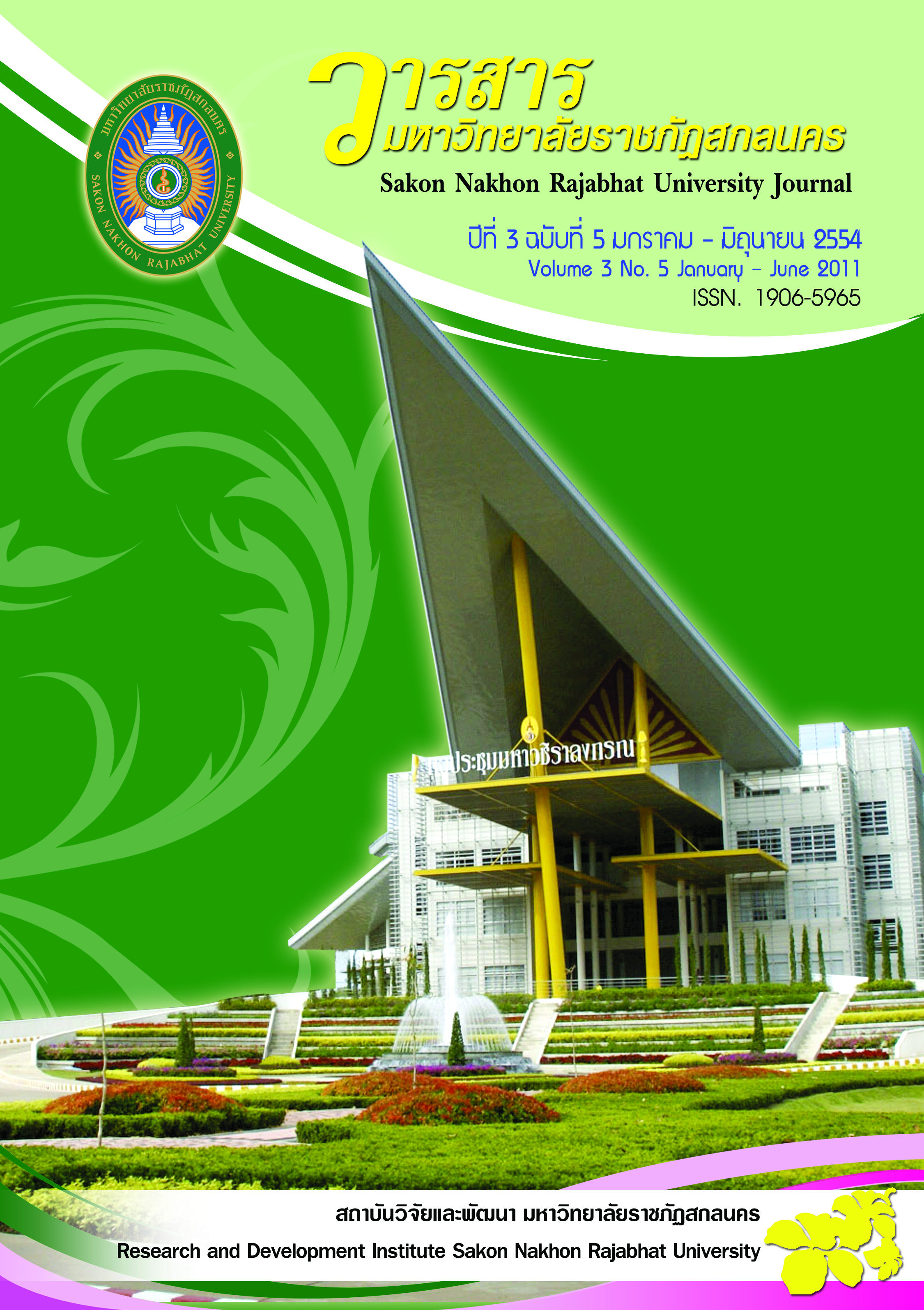ตำนานอุรังคธาตุกับเครือข่ายความสัมพันธ์ทางเศรษฐกิจ และสังคมของผู้คนในอนุภูมิภาคลุ่มน้ำโขง
Keywords:
อุรังคธาตุ, ตำนาน, พื้นที่ทางสังคม, ลุ่มน้ำโขงAbstract
บทคัดย่อ
บทความนี้ต้องการนำเสนอเครือข่ายความสัมพันธ์ทางเศรษฐกิจและสังคมของผู้คนในอนุภูมิภาคลุ่ม น้ำโขงตั้งแต่สมัยรัฐโบราณ โดยใช้ตำนานอุรังคธาตุ (Urangadhatu) เป็นเอกสารสำคัญในการวิเคราะห์ความ เชื่อมโยงระหว่างรัฐโบราณต่างๆ ในลุ่มน้ำโขงที่ปรากฏในตำนาน เช่น เมืองศรีโคตรบูร เมืองหนองหานหลวง (สกลนคร) เมืองหนองหานน้อย (อุดรธานี) เมืองจุฬณี (เมืองเว้) เมืองอินทปัฐ (กัมพูชา) และเมืองหนองคันแท เสื้อน้ำ (เวียงจันท์) เป็นต้น ผลการศึกษาพบว่า หากเปรียบเทียบตำแหน่งที่ตั้งทางกายภาพของรัฐโบราณตาม ตำนานอุรังคธาตุกับขอบเขตของรัฐชาติในปัจจุบันแล้วเห็นว่า ตำแหน่งของรัฐโบราณเหล่านั้นมีอาณาบริเวณ ครอบคลุมหลายประเทศอันได้แก่ ประเทศไทย ประเทศสาธารณรัฐประชาธิปไตยประชาชนลาว ประเทศ สาธารณรัฐสังคมนิยมเวียดนาม และราชอาณาจักรกัมพูชา โดยตำนานแสดงถึงความสัมพันธ์ของรัฐต่างๆ ดังกล่าวถูกเชื่อมโยงกับประเด็นทางเศรษฐกิจและสังคมผ่านความเชื่อทางศาสนาและการจัดการทรัพยากร รวมทั้งเส้นทางการค้าต่างๆ ทั้งทางบกและทางน้ำในลุ่มแม่น้ำโขง ดังนั้นการทำความเข้าใจกับตำนานอุรังคธาตุ จึงทำให้เห็นการสร้างพื้นที่ทางเศรษฐกิจและสังคม (Socio-Economic Space) ที่มีร่วมกันของประเทศต่างๆใน ลุ่มแม่น้ำโขงที่มีพัฒนาการทางประวัติศาสตร์ที่ยาวนาน ซึ่งเป็นพื้นฐานอันดีในการพัฒนาความสัมพันธ์และ ความร่วมมือบนเส้นทางระเบียงเศรษฐกิจตะวันออก-ตะวันตก (East-west Economics Corridor) ในปัจจุบัน ต่อไป
คำสำคัญ : อุรังคธาตุ, ตำนาน, พื้นที่ทางสังคม, ลุ่มน้ำโขง
Abstract
This article aims to present the social-economic interrelated network of people who resided in the Greater Mekong Sub-region in ancient kingdom. The Myth of Urangadhatu is the crucial document mainly used in this study to analyze the interrelation of ancient states in Mekong Subregion. The names of the ancient states appeared in the Urangadhatu myth are Srikotaboon, Nong Harn Luang (Sakon Nakhon), Nong Harn Noi (Udonthanee), Julanee (Hue), Inthapat (Cambodia), and Nong Kun Tae Sue Nam (Vientian). The study of geographical location of these ancient states covered many nations today, i.e., Thailand, Lao People’s Democratic Republic, the Socialist Republic of Vietnam and the Kingdom of Cambodia. The Myth of Urangadhatu reflects the interrelation among these ancient states through social-economic relation, religious belief, resource management and trading routes by land and by the Mekong River; it also illustrates the socio-economic space shared by these states. The Myth of Urangadhatu is, thus, one of major historical evidences for the long period of development in this subregion. With this knowledge, it could help strengthen interrelation and cooperation among the nations in the road network of the East-West Economic Corridor today and in the future.









